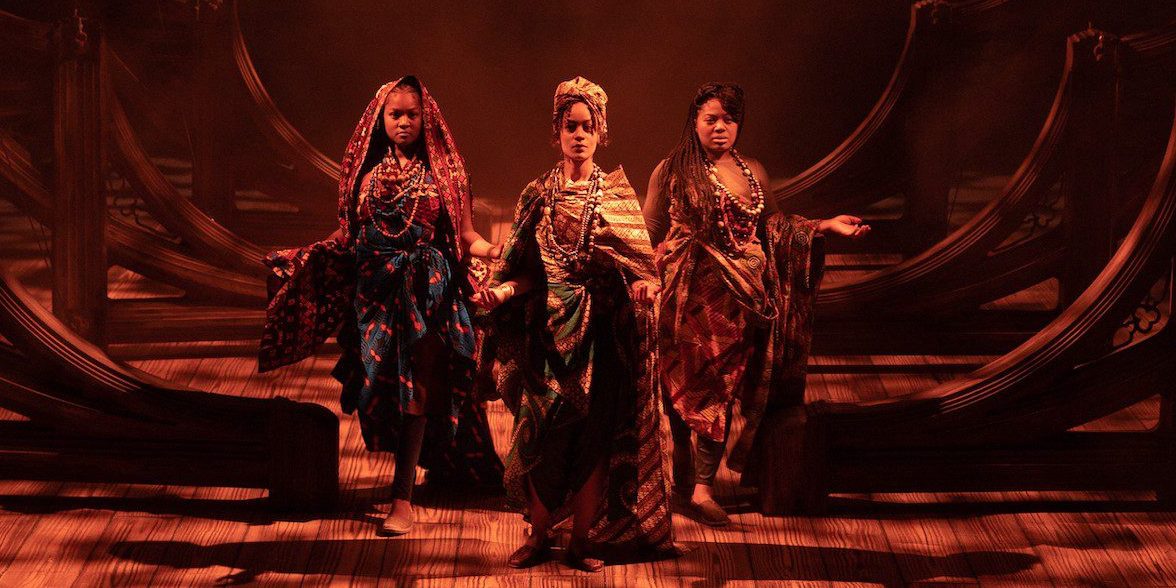In a massacre aboard the slave ship Zong – 132 women, men, and children perished in chains in the Caribbean sea in 1781. One hundred and twenty-two of them were deliberately cast off the deck, ten jumped rather than wait for their fate. The ship’s crew and owners claimed this barbarous act was an act of ‘necessity’, but the ship’s insurers disagreed. The resulting legal case (concerned with financial compensation, not murder), provided a platform for black and white abolitionists to press for the end of the slave trade, and eventually slavery itself.
Considerable credit is due to writer, co-director, and lead actor Giles Terera for delivering a production on such a challenging subject that is both entertaining and informative, harrowing and uplifting. He treads a fine line between impressing the true horror of such an act on the audience without making it unbearably grim. That much of the play is concerned with an insurance fraud trial (albeit one where the so-called ‘goods’ are people) might not sound riveting, but Terera ensures the legal proceedings remain engrossing throughout.
Most of the action concerns the efforts of campaigner and author Olaudah Equiano (Terera), assisted by fellow abolitionist Granville Sharp (Paul Higgins), to bring attention to the atrocity of the Zong massacre. Equiano and Sharp spar with each other, as their initially unequal relationship, develops into one based on genuine mutual respect. Terera and Higgins bring their characters to life and draw the audience in, lighting up the stage with their charisma.
A simple framing device for the main storyline following Equiano and Sharp ensures the modern relevance of the story is not lost on anyone. This uncomfortable interaction in a bookshop reminds us how deeply indebted modern Britain is to the Transatlantic slave trade.
The clever use of props and sets further drives home the point that cities such as Edinburgh, Bristol, and many others in Britain were built on the backs of the slave trade. Planks of wood become in turn the branches of an African tree, the decks of a slave ship, and a fine clock in a gentleman’s home. Crates for transporting tea or sugar play plinths in a courtroom. At one point, the roof beams of the court swing ominously down to form the hull of the Zong, a chilling reminder of the pervasiveness of the profits of slavery.
The play is at its strongest when suggesting such links and relevance, rather than spelling them out through sometimes slightly on-the-nose writing. The second act also labours somewhat under long, slow sections set in and around the Zong. A more suggestive, less literal representation of the travails of the enslaved people might have made a more effective, longer-lasting impression.
A consistent theme throughout the play is that the scars of slavery have left mark on all of our histories. The Meaning of Zong does not provide any easy answers for how to deal with this legacy. Instead, Terera demands that we focus less on the reasons why we live in the world we do, and instead concentrate on the responses each of us have to that world, on how each of us can do a little bit better every day.

